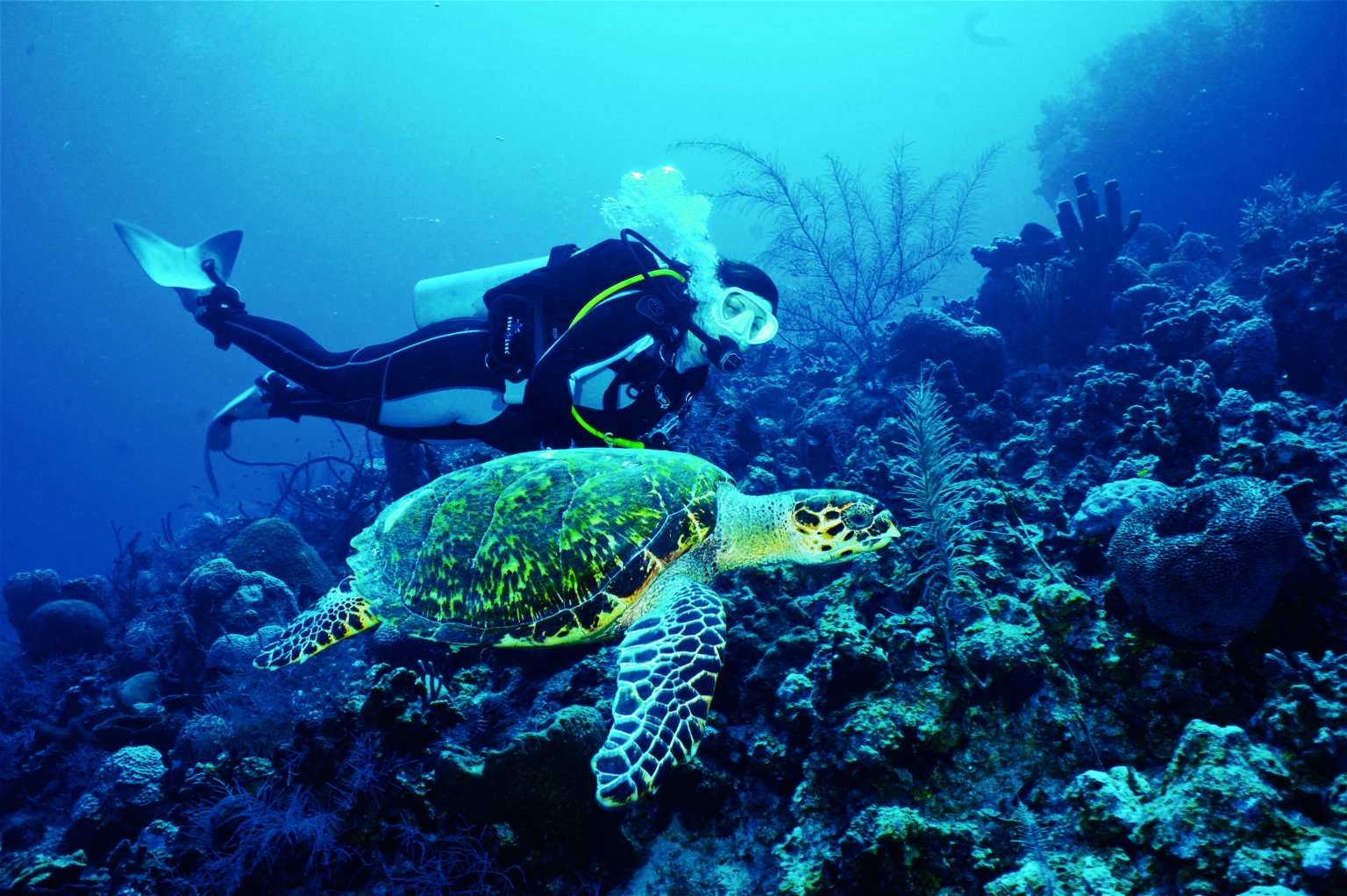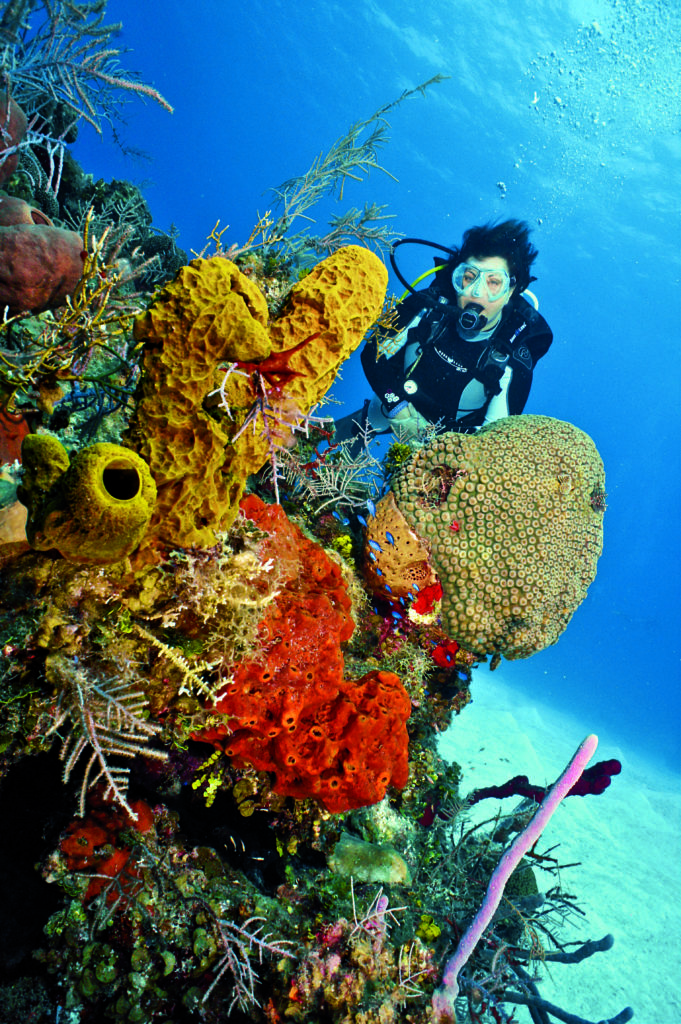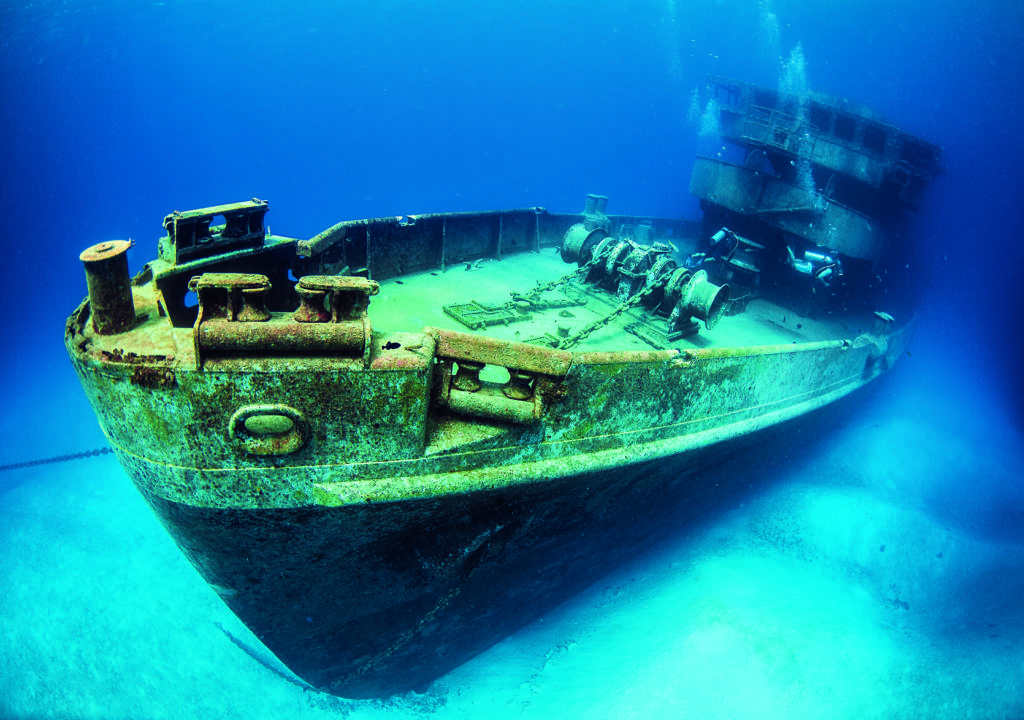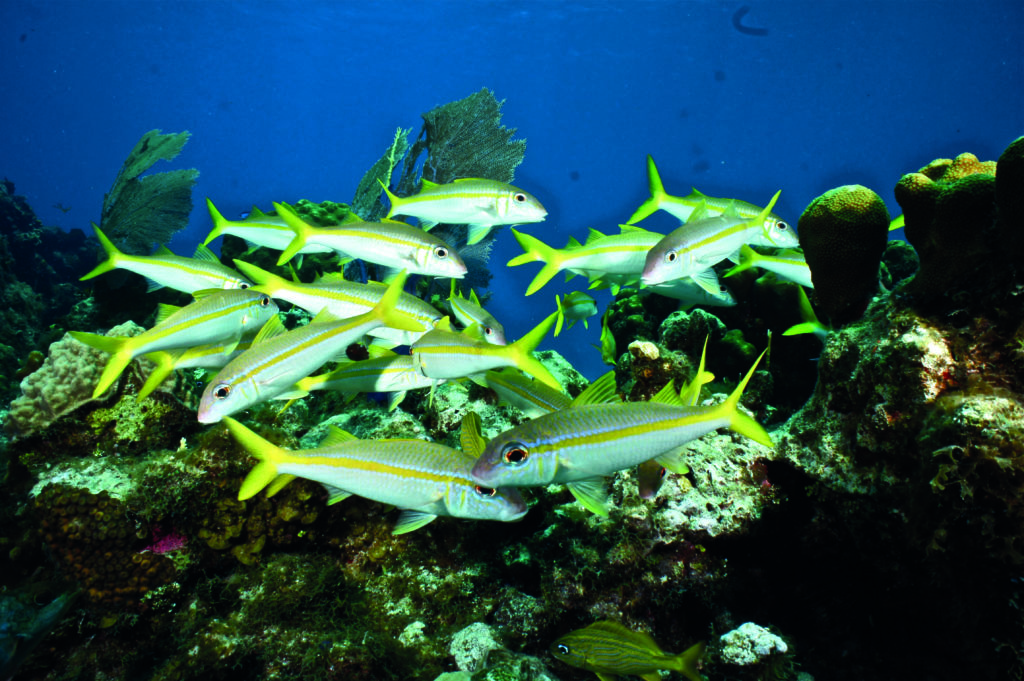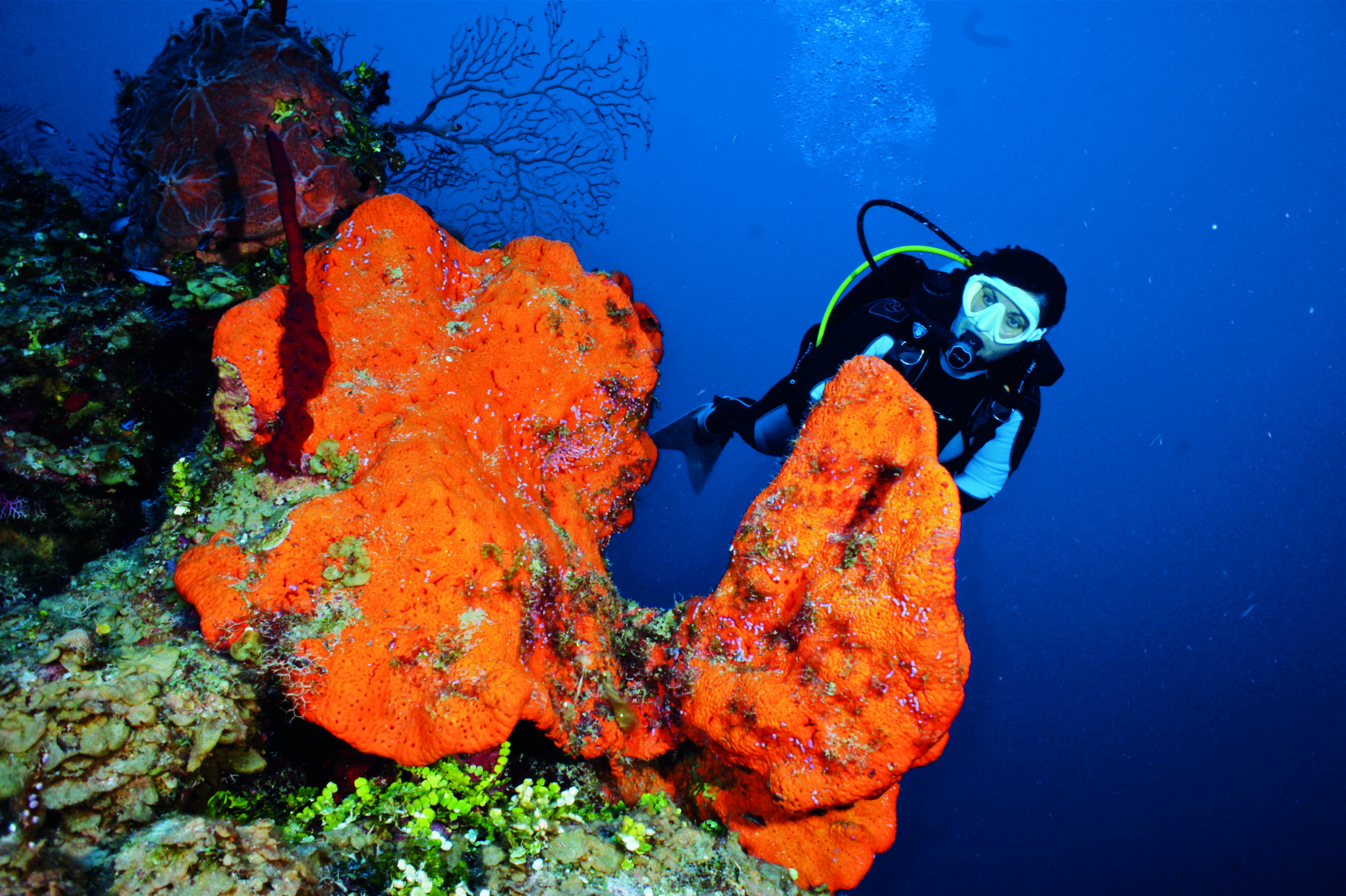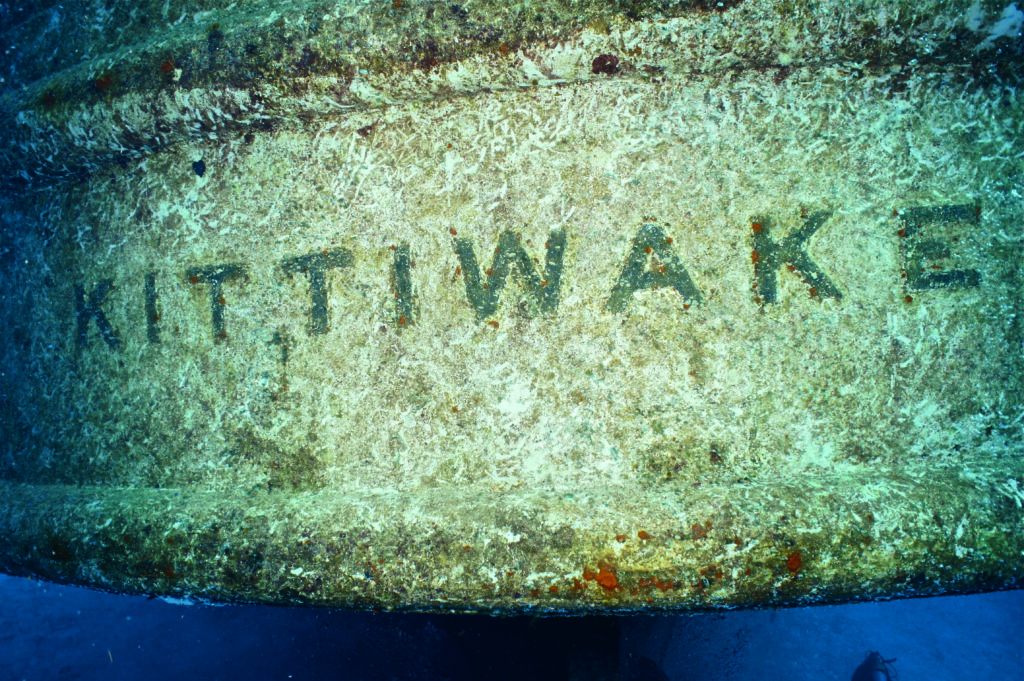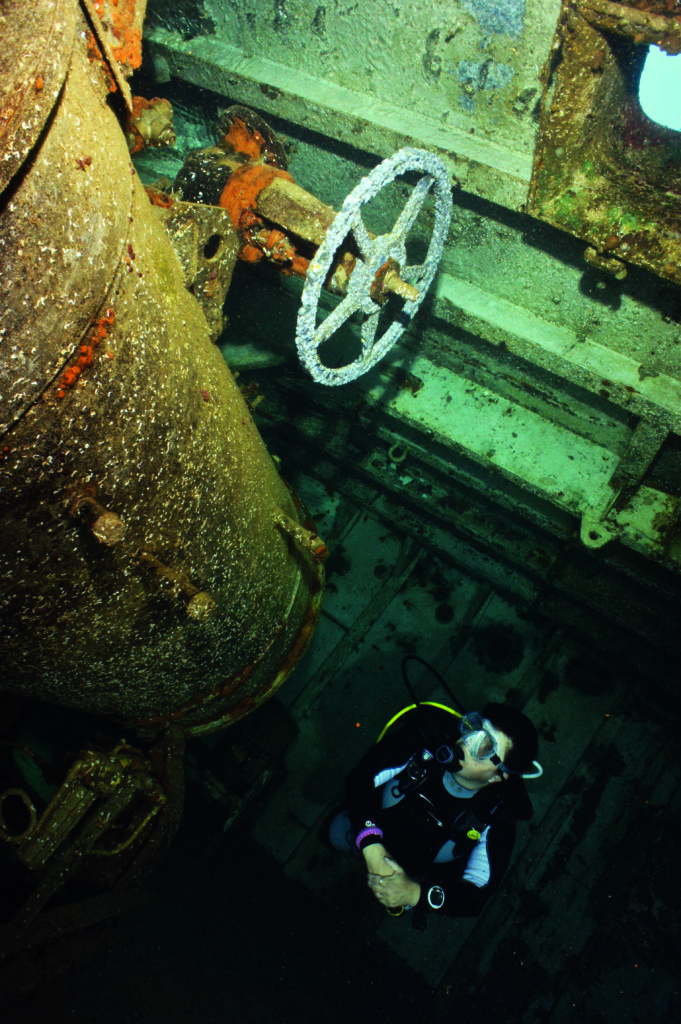The Cayman Islands are one of the top diving destinations in the Caribbean, if not the world. Mark Evans explains the attraction of these three very different islands.
The Cayman Islands regularly score highly in polls for ‘best overall diving destination’, ‘best wall diving’, ‘best wreck diving’ and so on, and though they are only small, these three little islands can more than hold their own against some big-hitters from around the globe, more than living up to the hype generated by these accolades.
Visitors can opt to stay on one island, or do a spot of island-hopping, as they are located close together and well served by regular internal flights. You can even jump on a liveaboard and cruise around the three over the course of a dive-heavy week if you want to seriously rack up your in-water time.
The islands are located in the western Caribbean some 150 miles south of Cuba and 167 miles northwest of Jamaica. Geographically, the Cayman Islands are part of the Cayman Ridge, which extends westwards from Cuba. The infamous Cayman Trench, the deepest part of the Caribbean at a whopping depth of over four miles, separates the three islands from Jamaica. There are no rivers on any of the three, which means no run-off into the surrounding sea, and this – together with the abyssal depths that envelop the Cayman Islands – ensures some of the most-phenomenal visibility you are likely to experience in the tropics.
Grand Cayman
Grand Cayman is the largest island in the chain, and home to the capital, George Town, which lies on the western shore towards the bottom of the famed Seven-Mile Beach, which is the hotspot for hotels, resorts and tourism. The island is approximately 22 miles long with an average width of four miles, and it has a huge 35 square mile shallow, reef-protected lagoon, the North Sound, which is the home of arguably the island’s most-famous dive site, Stingray City.
Here, in just 4m, divers can interact with massive southern stingrays, which were initially drawn here eating scraps thrown overboard by fishermen gutting their daily catch, but now take morsels of squid from eager divers, who clamour to be mobbed by the friendly rays.
Whether you agree with fish-feeding dives or not, it is certainly a spectacle to behold. Most of the 240-plus dive sites around the island tend to be located off the northwest, west, southwest and east coastlines.
Typically, shallow reefs and sandy patches stretch out from the shoreline, before you come to the drop-off that plummets into the deep. In some places this is relatively close to the shore, at others a good few hundred metres away from dry land. The northwest and the east dive sites are generally considered the best wall diving locations, and here the reef is quite rugged, with pristine coral growth, the chance of some pelagic encounters – I have seen hammerheads on every dive in the East End, for instance – and jaw-dropping topography that is showcased by the mega-vis. The drop-off starts at different depths, but expect 15m-20m being the average for the top of the walls.
The west and southwest has some great wall diving, but is also the location of some shallow wreck dives and other sunken attractions. The 20-metre-long cable layer Doc Poulson – named after the country’s first diving doctor – was sunk in West Bay as an artificial reef back in 1981 and is now full of marine life. The LCM David Nicholson, a World War Two landing craft, lies in 16m off the Sunset House Dive Resort house reef, near George Town, and is actually named after the centre’s first Divemaster. The former US military vessel Oro Verde, also lying off the west coast, is a 54-metre vessel that has been on the bottom since 1980 and is also a haven for various reef fish and invertebrates.
However, the jewel in the crown of Cayman wreck diving is undoubtedly the Kittiwake, a 76-metre, 2,200-ton submarine rescue vessel which was purpose sunk in 2011 for divers with plenty of features still in place, including recompression chambers, sinks, workbenches and so on. Multiple holes and hatches were cut out to allow for maximum light penetration, and while you can find your way around the five deck levels with this ambient light, a torch helps you spot all the details and little critters that call the wreck home. Photographers will love the large prop and rudder, and the bridge area, and as she comes to within a few metres of the surface, she is even accessible to snorkellers.
For something a little different, check out the Guardian of the Reef, a mythological half-warrior/half-seahorse statue created by Canadian sculptor Simon Morris that was sunk off Lighthouse Point in the northwest in just 18m in April 2014, or Amphitrite, a three-metre bronze mermaid standing in a sand patch on the Sunset House house reef.
Cayman Brac
Cayman Brac lies about 89 miles northeast of Grand Cayman, and is about 12 miles long with an average width of 1.25 miles. It may be fairly small, but it has the most-spectacular terrain of the trio, with the limestone outcrop named the Bluff rising some 40m above sea-level at the eastern end of the island, which is often used for topside activities.
The Brac, as the island is often referred to, has over 60 decent wall and reef dives, but the dive site that put it on the map is the MV Captain Keith Tibbetts, which was the premier shipwreck in the Cayman Islands until it was eclipsed by the Kittiwake. The only diveable Russian warship in the Western Hemisphere, this 110-metre Koni II-class frigate was renamed the Keith Tibbetts after a local politician and purpose-sunk off the west coast in 1996.
Storms have broken the vessel in two, making it feel more like a genuine wrecking, and inside you can find Cyrillic lettering on the control panels. The Kittiwake may be making waves in the diving world now, but the Tibbetts, which celebrated 20 years on the seabed last year, is still well worth a visit. Another underwater oddity worth seeking out is the Oceanic Voyagers, a two-metre-tall bronze statue of a pair of spotted dolphins cavorting with southern stingrays, which is a favourite with visiting photographers.
Little Cayman
Little Cayman is just five miles west of Cayman Brac and is approximately ten miles long with an average width of just one mile. It is extremely low level, with only a few areas of the north shore rising to 12 metres above sea-level. Life here is much more laidback, and it is a great place to get away from it all, chill out and relax, with some excellent diving added in.
The island may be small, but it still has some 60 dives sites, and chief among these is one of the world’s most-revered wall diving areas, Bloody Bay. Starting in just 5m of water, this sheer drop-off heads off into over 1,800m. The wall is ablaze with vibrant sponges, encrusting soft corals, hard corals, whip corals and bright algaes, so much so that it appears not one section is not colonised by one form of life or another.
Then throw all manner of reef dwellers and the occasional pelagic visitor into the mix and it is not hard to see the appeal of this immense site, which actually provides enough wall for several dive sites, such as Great Wall East (and West), Randy’s Gazebo, Donna’s Delight, Marylin’s Cut, Lea Lea’s Lookout and Coconut Wall.
Conclusion
As you can see, all three islands have their own vibe and attractions, and you can choose to visit one, two or all three. A great combo is to spend a week on Grand Cayman, diving the north point, the East End and the Kittiwake, and then hop over to Little Cayman for a few days, so you can absorb the wonderful wall diving in Bloody Bay. With the Brac being so close, you can even nip across with a Little Cayman dive centre to dive the Tibbetts, meaning you can tick off many of the major dive draws in one trip.
The west and southwest has some great wall diving, but is also the location of some shallow wreck dives and other sunken attractions
The Kittiwake may be making waves in the diving world now, but the Tibbetts, which celebrated 20 years on the seabed last year, is still well worth a visit
Dive 365: - Launched in 2008, the Dive 365 initiative set out to provide a new dive experience for every day of the year, and includes sites for all skill levels.
Photographs by Mark Evans
